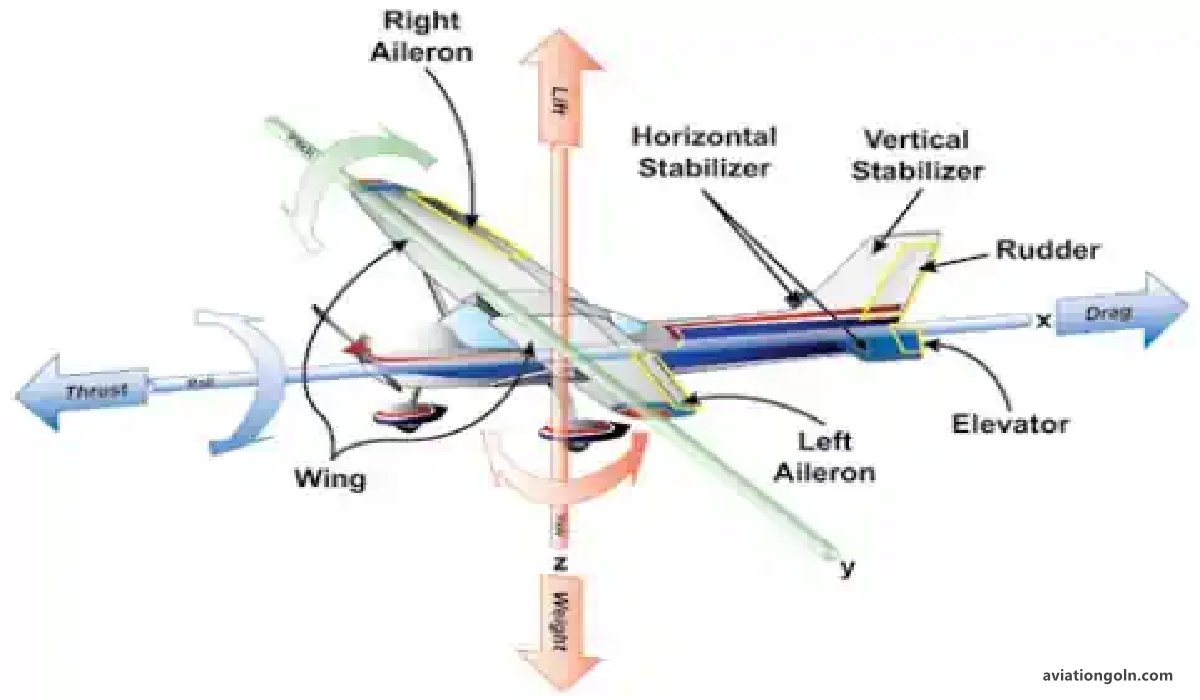Introduction to Flight Control Systems (FCS) are pivotal to the successful operation of an aircraft. From the Wright brothers’ first flight to today’s advanced jets, the principles of controlling an aircraft have remained constant, but the methods have undergone revolutionary changes. Today’s FCS not only ensures that the aircraft responds accurately to a pilot’s inputs but also that it remains stable in a variety of atmospheric conditions and situations. In this article, we will explore the intricate world of flight control systems and their evolution.
Introduction to Flight Control Systems
1. Basic Principles of Flight Control
Before diving into flight control systems, it’s essential to understand the basic principles of flight control. Aircraft control is about managing an aircraft’s orientation and trajectory. This is done through three primary axes:
- Pitch: The up and down movement of the aircraft’s nose. This is controlled primarily by the elevators located on the tail.
- Roll: The rotation of the aircraft around its longitudinal axis. Ailerons, situated on the wings, primarily control this.
- Yaw: The side-to-side movement of the aircraft’s nose. The rudder, located on the vertical stabilizer, controls this.

2. Mechanical Flight Control Systems
Mechanical systems were the earliest form of FCS and are still in use in many smaller aircraft today.
- Cockpit Controls: The pilot uses a control stick or yoke, rudder pedals, and other levers.
- Linkages: Rods, cables, and pulleys connect the cockpit controls to the aircraft’s control surfaces.
- Advantages: Simplicity, reliability, and direct tactile feedback for the pilot.
- Limitations: Not ideal for larger, faster aircraft because of the physical effort required and lack of automation.

3. Hydraulic Flight Control Systems
As aircraft grew larger and faster, hydraulic systems became necessary to reduce the pilot’s workload and provide the forces necessary to move control surfaces at high speeds.
- Hydraulic Actuators: These devices convert hydraulic pressure into mechanical movement, driving the control surfaces.
- Advantages: Powerful and can move large control surfaces quickly.
- Limitations: They depend on hydraulic fluid, which can leak, and may be heavier than other systems.

4. Fly-by-Wire (FBW) Systems
In FBW systems, electronic signals replace the direct mechanical or hydraulic connections between the pilot’s controls and the aircraft’s control surfaces.
- Sensors: Devices that detect the pilot’s inputs and convert them into electrical signals.
- Flight Control Computers: Process these signals and send commands to the control surface actuators.
- Actuators: Electric or hydraulic devices that move the control surfaces based on the commands they receive.

- Advantages: Can be lighter than mechanical systems, offer advanced automation and safety features, and can easily incorporate artificial feedback for the pilot.
- Limitations: Vulnerable to electrical and electronic failures, and require redundant systems for safety.

5. Autonomous and Unmanned Flight Control Systems
The 21st century has seen the rise of drones and the push for autonomous commercial aircraft. These systems rely heavily on automated FCS.
- Onboard Sensors: Detect environmental factors like wind, temperature, and air pressure.
- GPS and INS: Provide the aircraft’s position and orientation.
- Flight Control Software: Makes decisions based on data from the sensors and navigational systems and sends commands to the actuators.
- Advantages: Can operate in environments or perform tasks that might be risky for human pilots.
- Limitations: Depend heavily on software, which can have bugs, and may raise ethical and regulatory issues.

6. Safety and Redundancy in Flight Control Systems
Safety is paramount in aviation. Redundant systems are often incorporated to ensure that if one system fails, backup systems can take over.
- Multiple Flight Control Computers: Many modern aircraft have multiple flight control computers that cross-check each other’s decisions.
- Dual Hydraulics: Some aircraft have multiple hydraulic systems so that if one fails, the other can still operate the control surfaces.
- Back-up Power Supplies: Essential for electronic and FBW systems to ensure they remain operational even if the primary power source fails.

7. Future Trends in Flight Control Systems
Advancements in technology and new demands from the aviation industry are pushing the evolution of FCS.
- Artificial Intelligence (AI) in FCS: AI can process vast amounts of data quickly, potentially making decisions faster and more accurately than human pilots.
- Integration with Air Traffic Control: Future FCS might be more integrated with ground-based air traffic control systems, allowing for more efficient airspace management.
- Green Aviation: As the push for environmentally friendly aviation grows, FCS will play a role in optimizing flight paths for fuel efficiency and reduced emissions.

From the rudimentary control cables of the Wright Flyer to the sophisticated electronic systems of modern jets, flight control systems have seen a vast transformation over the past century. These systems are the heart and brain of any aircraft, ensuring that it responds accurately to the pilot’s inputs and remains stable and safe in all conditions. As technology continues to evolve, and the demands of the aviation industry shift, flight control systems will undoubtedly continue to adapt, becoming even more efficient, safe, and innovative.
Read more:
